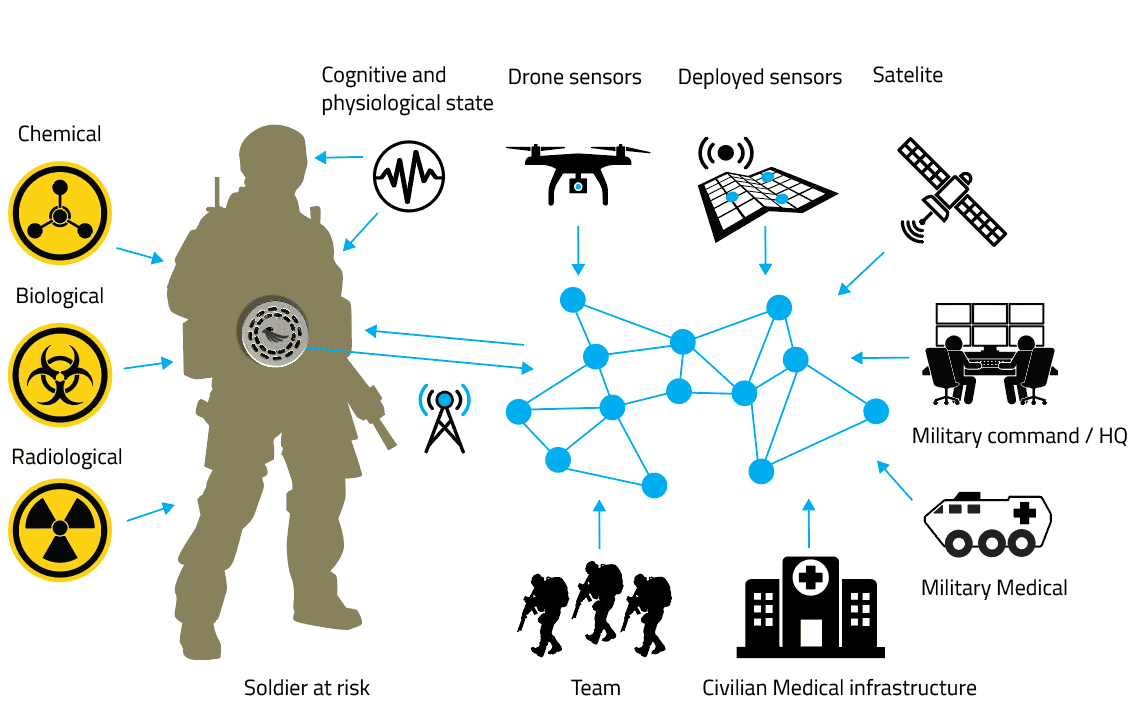Watchbird Awarded NOK 12.4 MNOK to develop an advanced CBRNsensor
The Norwegian Ministry of Defence has awarded Watchbird AS a grant of 12,4 MNOK to accelerate the research and development of its next-generation sensor system for chemical, biological, radiological, and nuclear (CBRN) threat detection. The funding is part of the government’s 2025 initiative to strengthen national defence technology capabilities and is allocated under the program; Support for the development of Norwegian Defence Technology.
The awarded project focuses on Watchbird’s (WB) wearable mini multi-sensor platform, designed to detect hazardous airborne substances—such as toxic industrial chemicals (TICs), chemical warfare agents (CWAs), that provide real-time alerts the wearer, the operational command units and management. The goal is to improve situational awareness and early threat response for military personnel and first responders operating in contaminated or degraded environments as described in this concept sketch:
“This funding allows us to take a major step forward in the research and development face aiming for a developed product in 2028.
Modern conflict zones from Syria to Ukraine have proven that the threat from chemical exposure is real and escalating. Our sensor will be designed to keep operators alert, protected, and mission-ready, even under the most extreme conditions.”
“A personal CBRN sensor for modern threath landscape and technology”
A Response to the Modern Threat Landscape
CBRN threats are no longer limited to theoretical battlefield scenarios—they are increasingly present in asymmetric warfare, industrial sabotage, and urban conflict. In recent years, the use of chlorine gas and other toxic agents in active war zones has underscored the urgent need for practical, soldier-worn detection systems that can operate continuously and unobtrusively.
The Watchbird sensor aims to close this capability gap by offering:
Multi-agent detection using advanced miniaturized multi sensors
Real-time local + remote alerts via secure wireless transmission
Plug-and-play integration with existing gear and communication systems
Low-burden design tailored for extended field deployment
Scalability across defence, civil protection, and humanitarian use
The system is currently undergoing research and development in collaboration with the Norwegian Defence Research Establishment (FFI) and is designed in line with NATO interoperability standards.
Government Recognition of Strategic Technologies
The allocation was announced in Proposition 146 S (2024–2025), the government’s supplementary budget proposal, and is one of only a handful of direct grants earmarked for high-impact defence R&D projects. Watchbird is listed alongside Kongsberg Defence & Aerospace, FLIR and other key players receiving strategic grants.
The Ministry of Defence emphasized the need for accelerating development of technologies that strengthen Norway’s national preparedness, industrial base, and contribution to allied operations. Until a permanent regulatory framework is in place, these grants are awarded as one-off allocations to pre-selected recipients.
About the Project:
The Watchbird CBRN sensor project is part of the company’s broader DETECT TO PROTECT initiative, which includes both sensor technologies and wearable early protective equipment. The system is being developed in close cooperation with FFI, the Norwegian armed forces, allied friends and special operations forces.
For further updates and technical information, follow our development blog here


